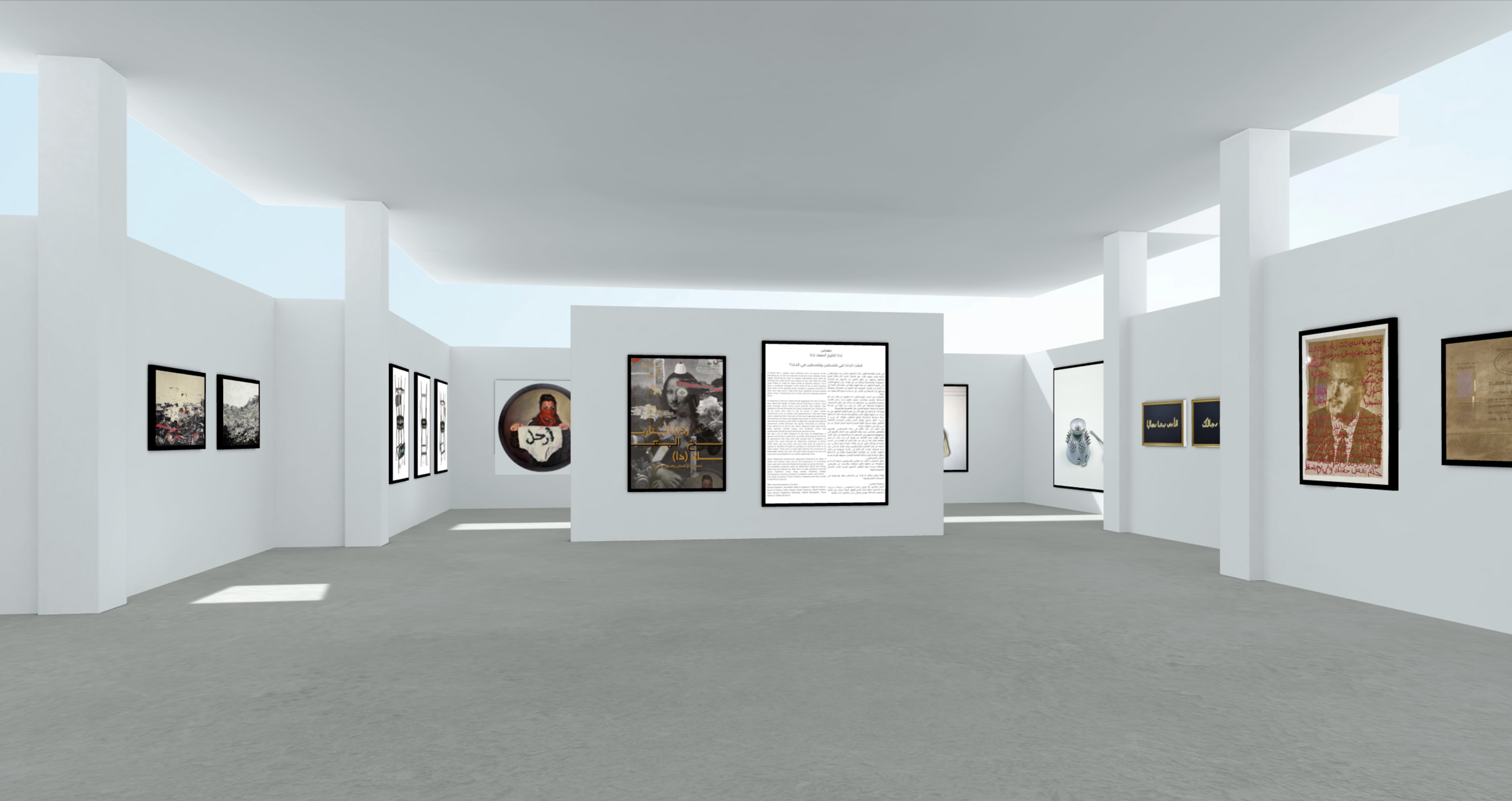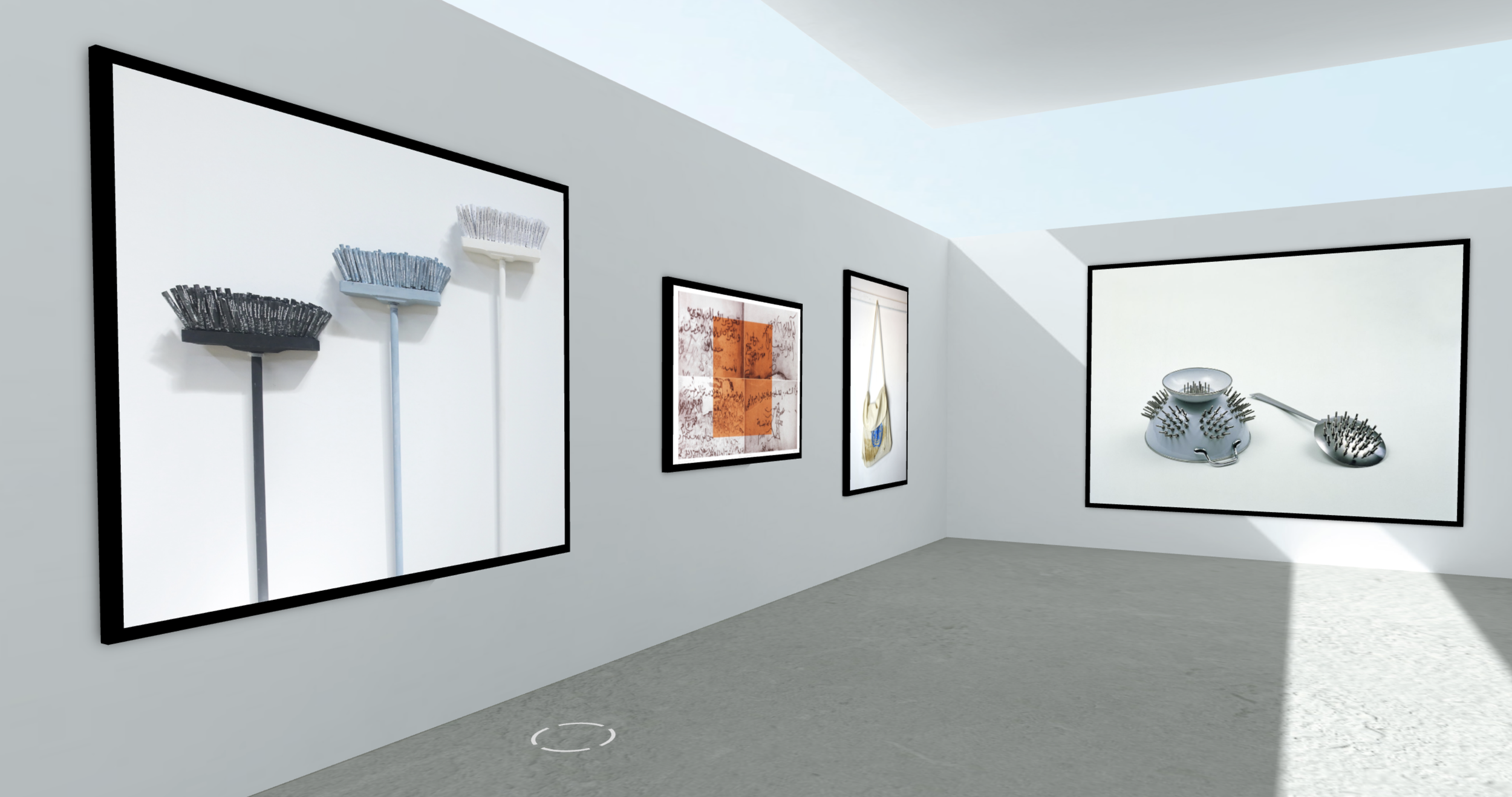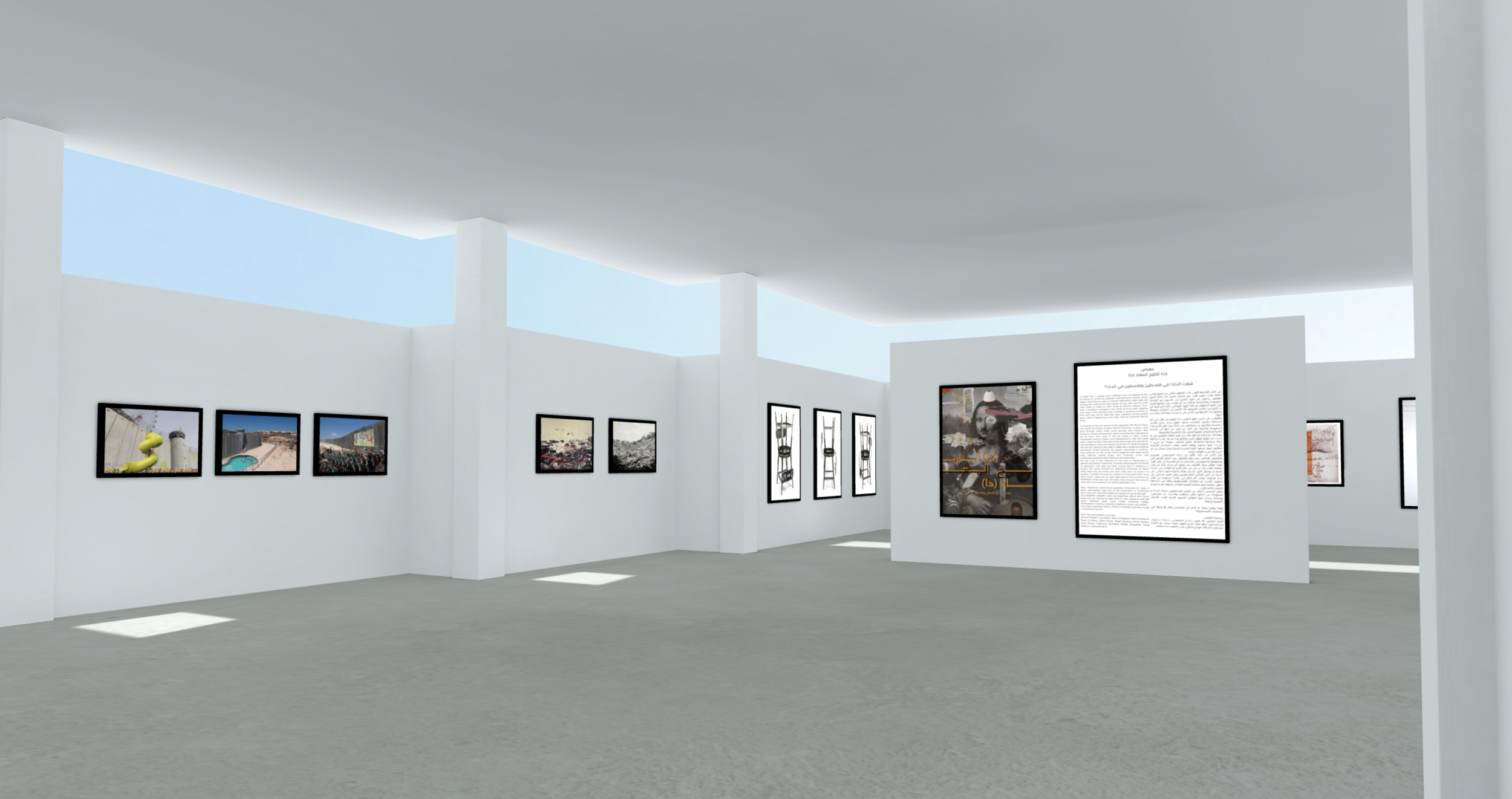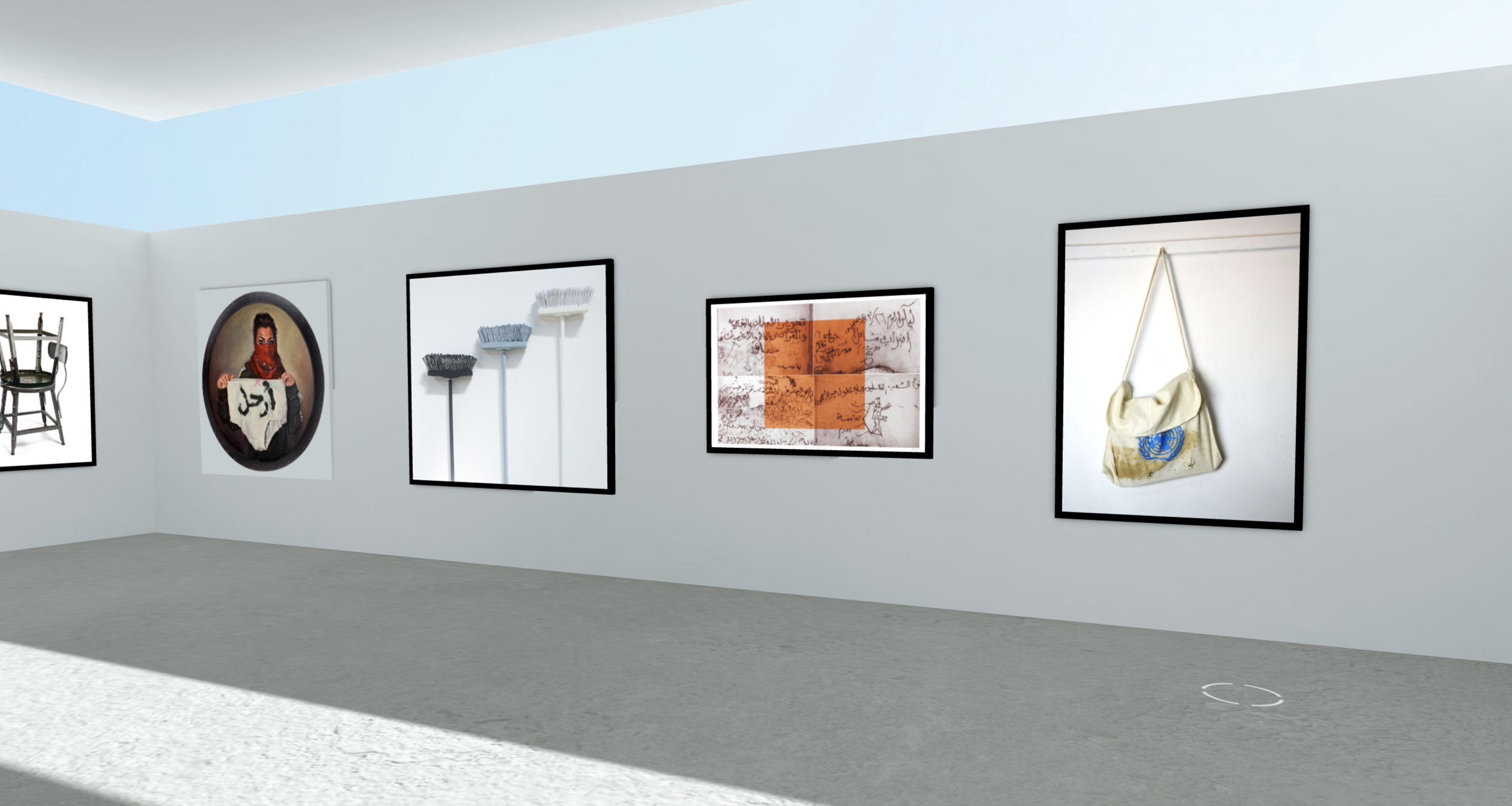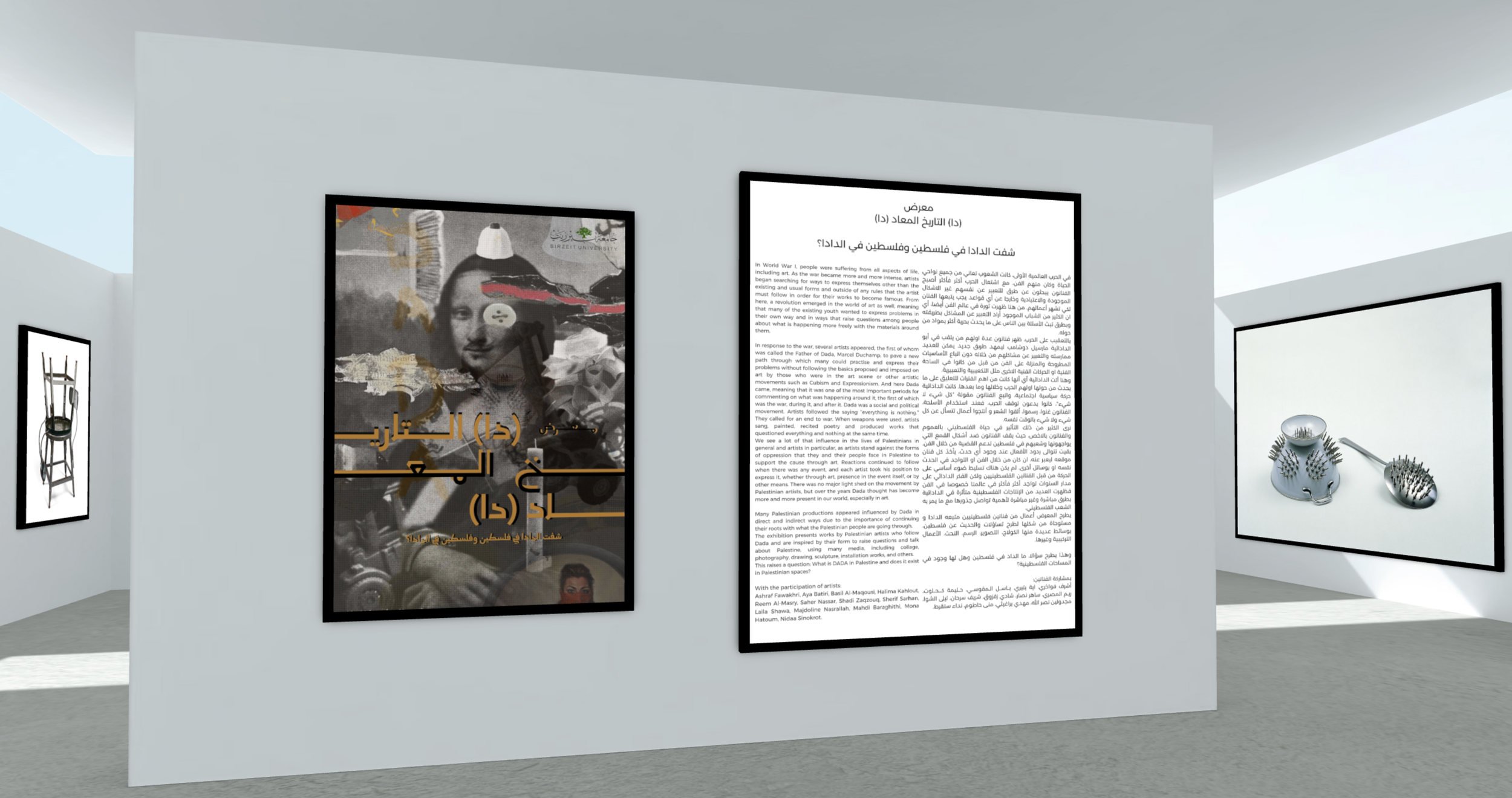
DA Al Tarek Al Moad DA / DA Repeated History DA
Did you see Dadaism in Palestine and Palestine in Dadaism
The exhibition was curated by the students of the Contemporary Visual Arts program, within the course Exhibition Practices 3, under the supervision of Samar Martha.
Hosted at the entrance of the Faculty of Art, Design, and Music, Birzeit University.
Exhibition Link
visit.virtualartgallery.com/dada-exhibition-birzeit-art
In World War I, people were suffering from all aspects of life, including art. As the war became more and more intense, artists began searching for ways to express themselves other than the existing and usual forms and outside of any rules that the artist must follow in order for their works to become famous. From here, a revolution emerged in the world of art as well, meaning that many of the existing youth wanted to express problems in their own way and in ways that raise questions among people about what is happening more freely with the materials around them.
In response to the war, several artists appeared, the first of whom was called the Father of Dada, Marcel Duchamp, to pave a new path through which many could practise and express their problems without following the basics proposed and imposed on art by those who were in the art scene or other artistic movements such as Cubism and Expressionism. And here Dada came, meaning that it was one of the most important periods for commenting on what was happening around it, the first of which was the war, during it, and after it. Dada was a social and political movement. Artists followed the saying “everything is nothing.” They called for an end to war. When weapons were used, artists sang, painted, recited poetry and produced works that questioned everything and nothing at the same time.
We see a lot of that influence in the lives of Palestinians in general and artists in particular, as artists stand against the forms of oppression that they and their people face in Palestine to support the cause through art. Reactions continued to follow when there was any event, and each artist took his position to express it, whether through art, presence in the event itself, or by other means. There was no major light shed on the movement by Palestinian artists, but over the years Dada thought has become more and more present in our world, especially in art. Many Palestinian productions appeared influenced by Dada in direct and indirect ways due to the importance of continuing their roots with what the Palestinian people are going through.
The exhibition presents works by Palestinian artists who follow Dada and are inspired by their form to raise questions and talk about Palestine, using many media, including collage, photography, drawing, sculpture, installation works, and others.
This raises a question: What is DADA in Palestine and does it exist in Palestinian spaces?
With the participation of artists:
Ashraf Fawakhri, Aya Batiri, Basil Al-Maqousi, Halima Kahlout, Reem Al-Masry, Saher Nassar, Shadi Zaqzouq, Sherif Sarhan, Laila Shawa, Majdoline Nasrallah, Mahdi Baraghithi, Mona Hatoum, Nidaa Sinokrot.
The exhibition was designed and curated as a form of education and training. Many artists granted permission for their works to be displayed, while others works were displayed to be included in support of the concept.
معرض دا التاريخ المعاد دا
شفت الدادا في فلسطين وفلسطين في الدادا؟
قيم المعرض من قبل طلاب تخصص الفنون البصرية المعاصرة، محاضرة المعارض 3 بإشراف سمر مرثا
جامعة بيرزيت، في مدخل كلية الفنون، التصميم والموسيقى
رابط المعرض
visit.virtualartgallery.com/dada-exhibition-birzeit-art
بيان المعرض
في الحرب العالمية الأولى، كانت الشعوب تعاني من جميع نواحي الحياة وكان منهم الفن، مع اشتعال الحرب أكثر فأكثر أصبح الفنانون يبحثون عن طرق للتعبير عن انفسهم غير الاشكال الموجودة والاعتيادية وخارجا عن أي قواعد يجب ان يتبعها الفنان لكي تشهر أعمالهم. من هنا ظهرت ثورة في عالم الفن أيضا، أي ان الكثير من الشباب الموجود أراد التعبير عن المشاكل بطريقته وبطرق تبث الأسئلة بين الناس على ما يحدث بحرية أكثر بمواد من حوله. وهنا أتت الحركة الدادائية
بالتعقيب على الحرب، ظهر فنانون عدة اولهم من يلقب في أبو الدادائية مارسيل دوشامب ليمهد طريق جديد يمكن للعديد ممارسته والتعبير عن مشاكلهم من خلاله دون اتباع الأساسيات المطروحة والمنزلة على الفن من قبل من كانوا في الساحة الفنية او الحركات الفنية الاخرى مثل التكعيبية والتعبيرية. وهنا أتت الدادائية أي أنها كانت من اهم الفترات للتعليق على ما يحدث من حولها اولهم الحرب وخلالها وما بعدها. كانت الدادائية حركة سياسية اجتماعية، واتبع الفنانون مقولة "كل شيء لا شيء"، كانوا يدعون لوقف الحرب، فعند استخدام الأسلحة، الفنانون غنوا، رسموا، ألقوا الشعر و أنتجوا أعمال تتساءل عن كل شيء ولا شيء بالوقت نفسه
نرى الكثير من ذلك التأثير في حياة الفلسطيني بالعموم والفنانون بالاخص، حيث يقف الفنانون ضد أشكال القمع التي يواجهونها وشعبهم في فلسطين لدعم القضية من خلال الفن. بقيت تتوالى ردود الأفعال عند وجود أي حدث، يأخذ كل فنان موقعه ليعبر عنه، ان كان من خلال الفن او التواجد في الحدث نفسه او بوسائل أخرى. لم يكن هناك تسليط ضوء أساسي على الحركة من قبل الفنانين الفلسطينيين ولكن الفكر الدادائي على مدار السنوات تواجد أكثر فأكثر في عالمنا خصوصا في الفن فظهرت العديد من الإنتاجات الفلسطينية متأثرة في الدادائية بطرق مباشرة وغير مباشرة لأهمية تواصل جذورها مع ما يمر به الشعب الفلسطيني
يطرح المعرض أعمال من فنانين فلسطينيين متبعه الدادا و مستوحاة من شكلها لطرح تساؤلات والحديث عن فلسطين، بوسائط عديدة منها الكولاج، التصوير، الرسم، النحت، الأعمال التركيبية وغيرها
وهذا يطرح سؤالا، ما الداد في فلسطين وهل لها وجود في المساحات الفلسطينية؟
بمشاركة الفنانين
أشرف فواخري، اية بتيري، باسل المقوسي، حليمة كحلوت، ريم المصري، ساهر نصار، شادي زقزوق، شريف سرحان، ليلى الشوا، مجدولين نصر الله، مهدي براغيثي، منى حاطوم، نداء سنقرط
صمم وقيم المعرض كشكل من اشكال التعليم والتدريب،العديد من الفنانين اخذ اذنهم لعرض اللوحات والاخرين كتب ان تواجد اعمالهم ليدعم الفكره




